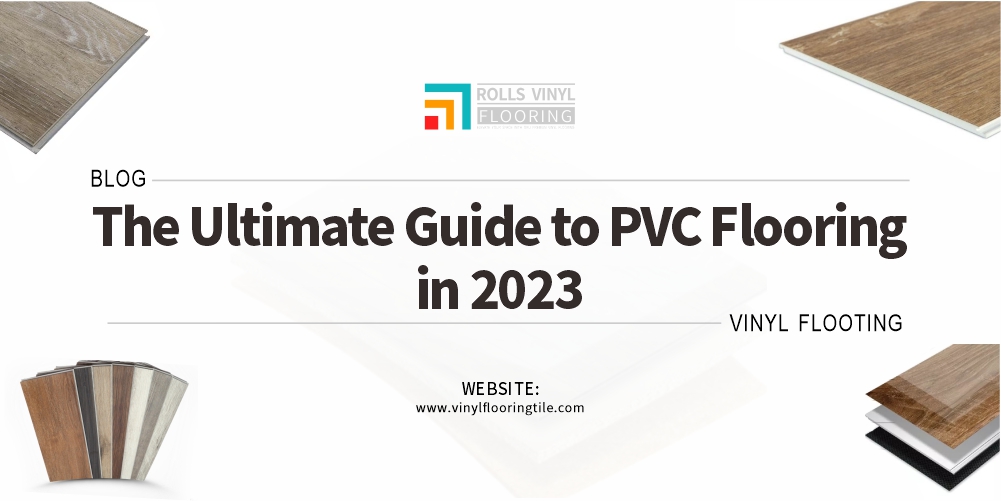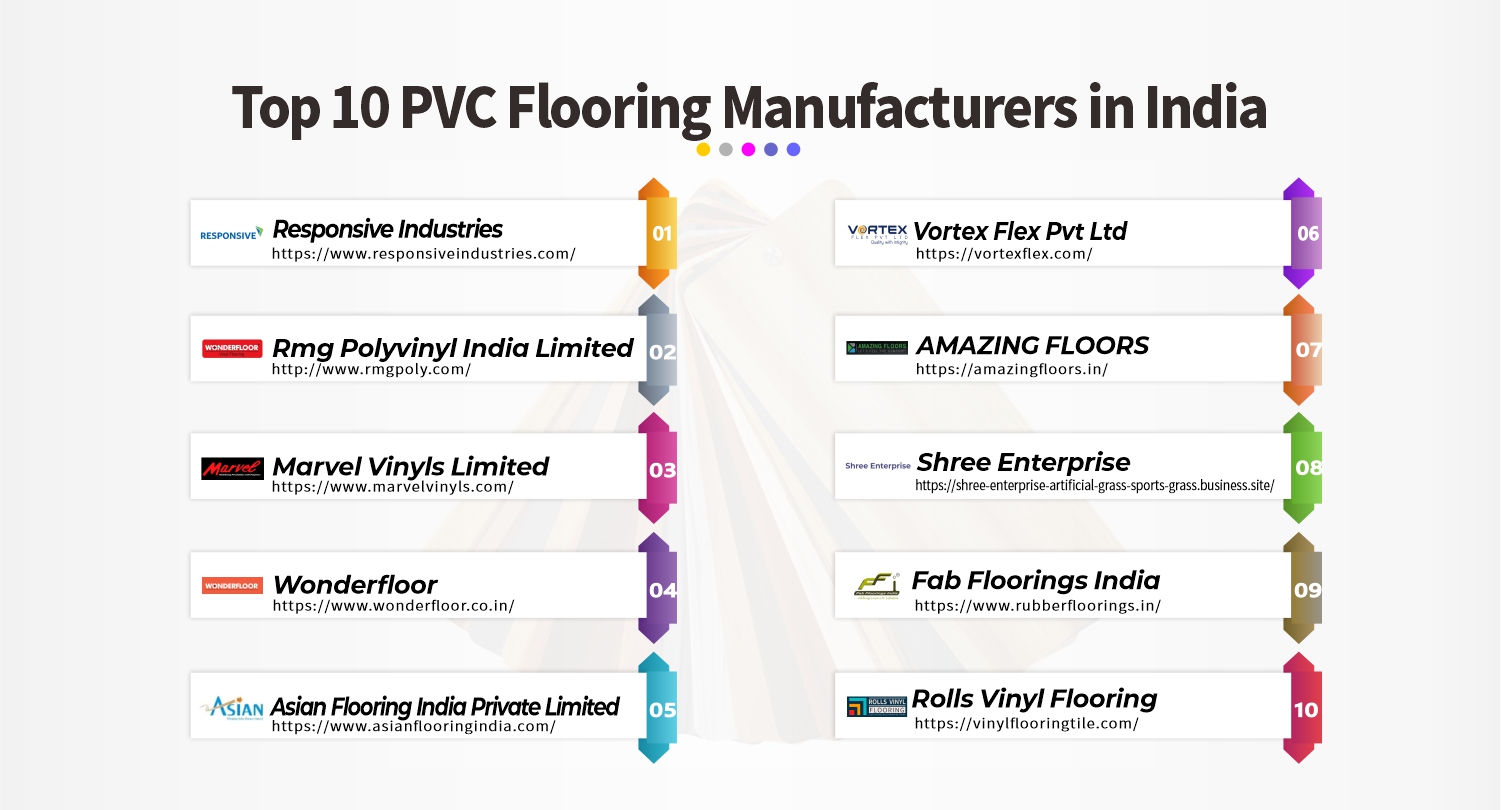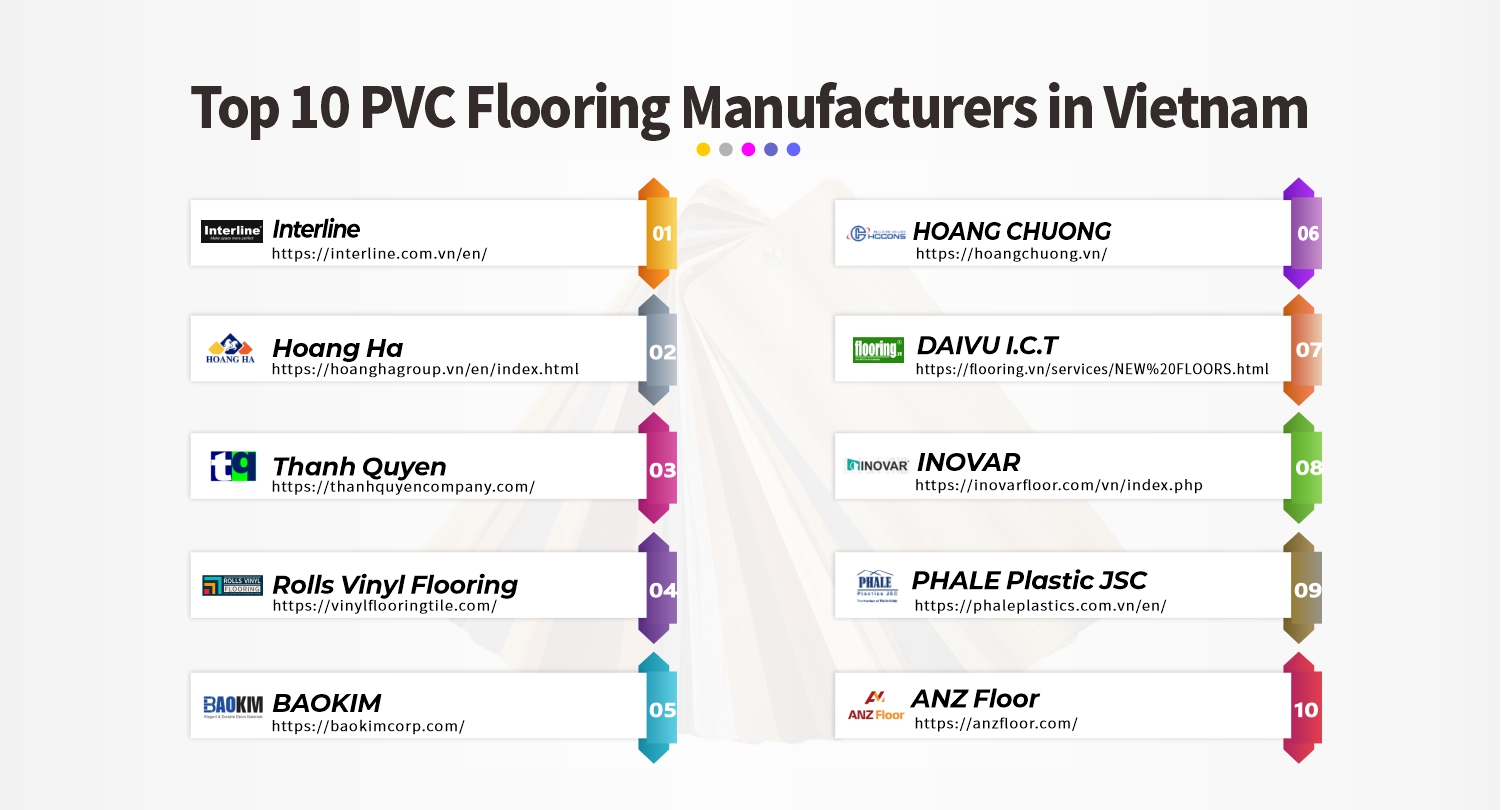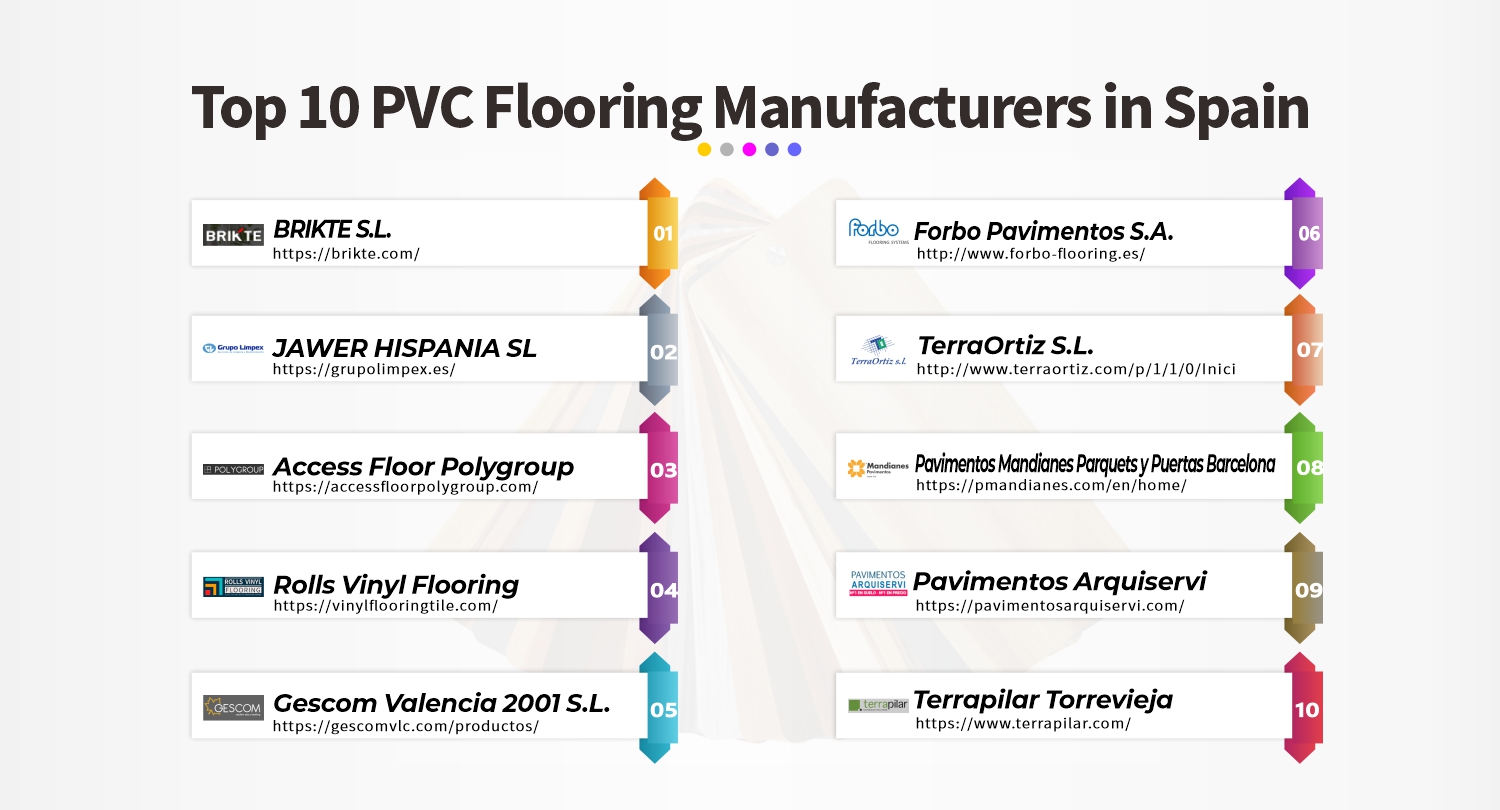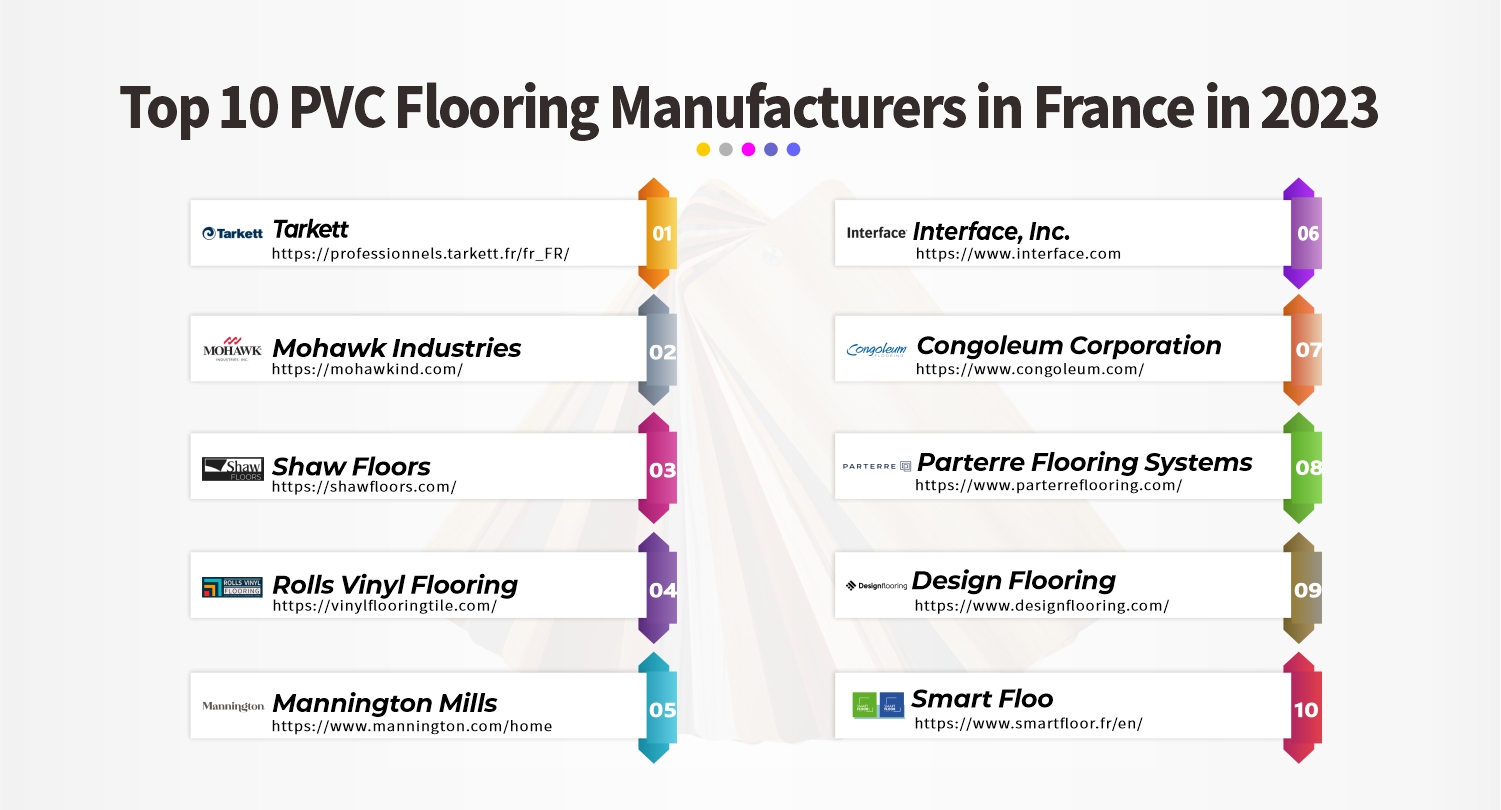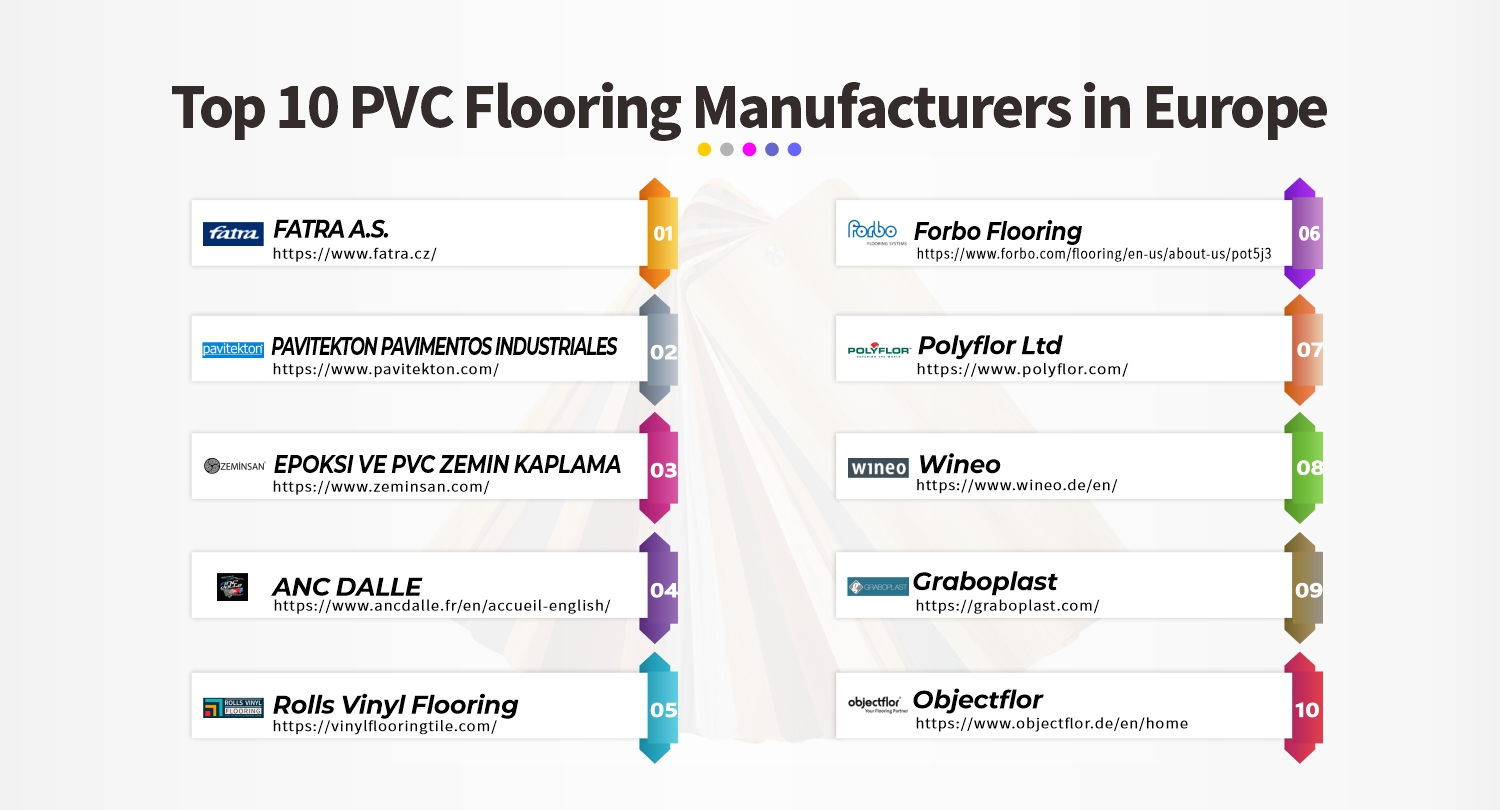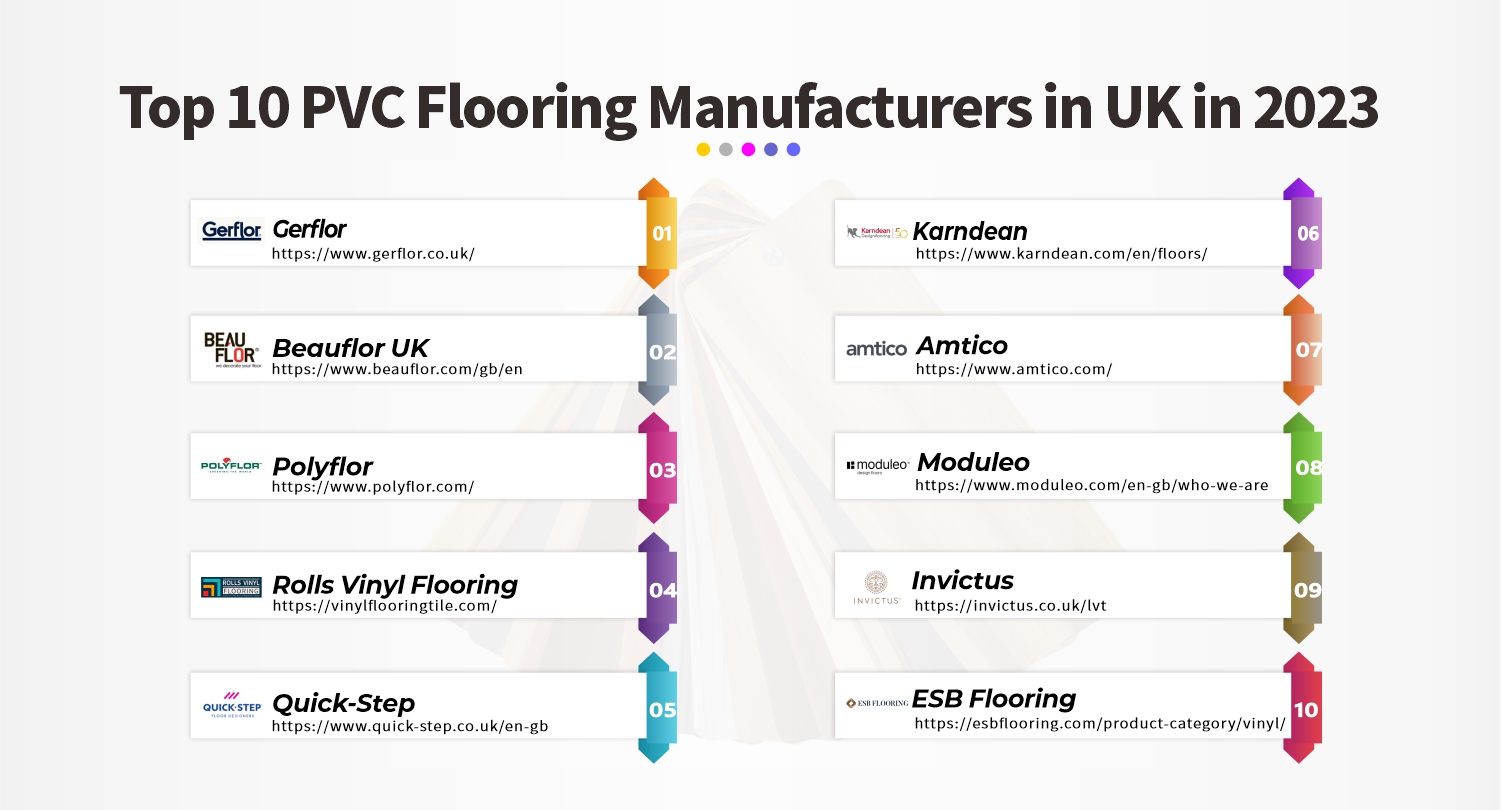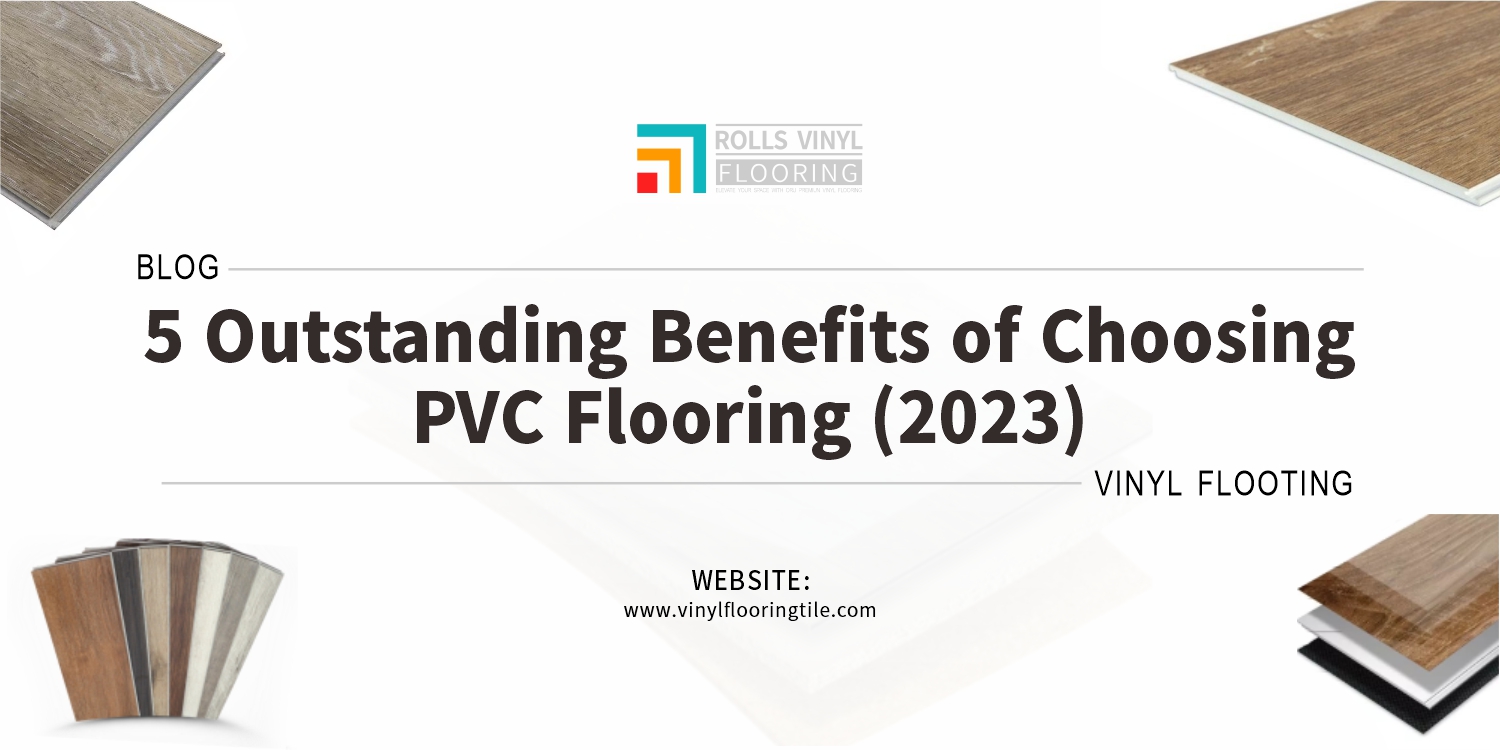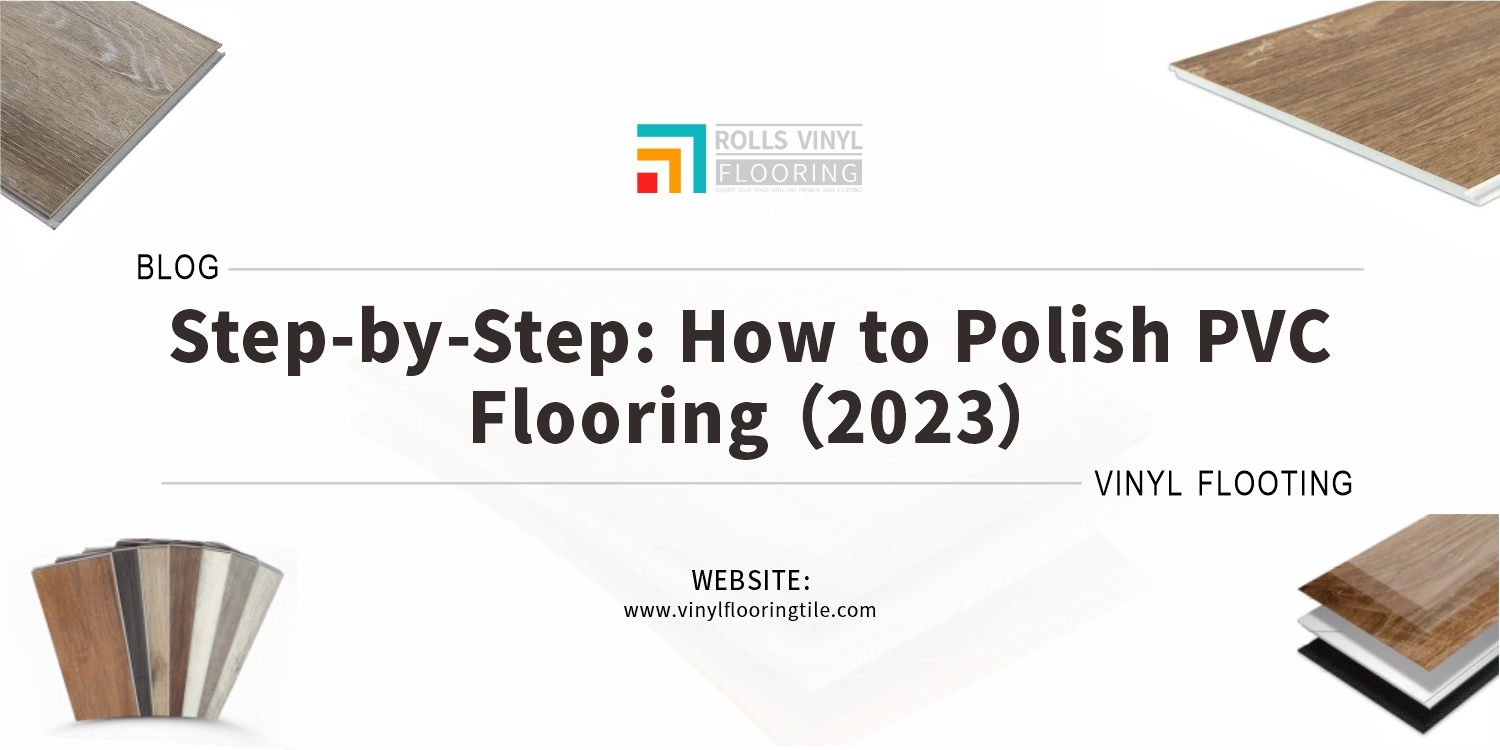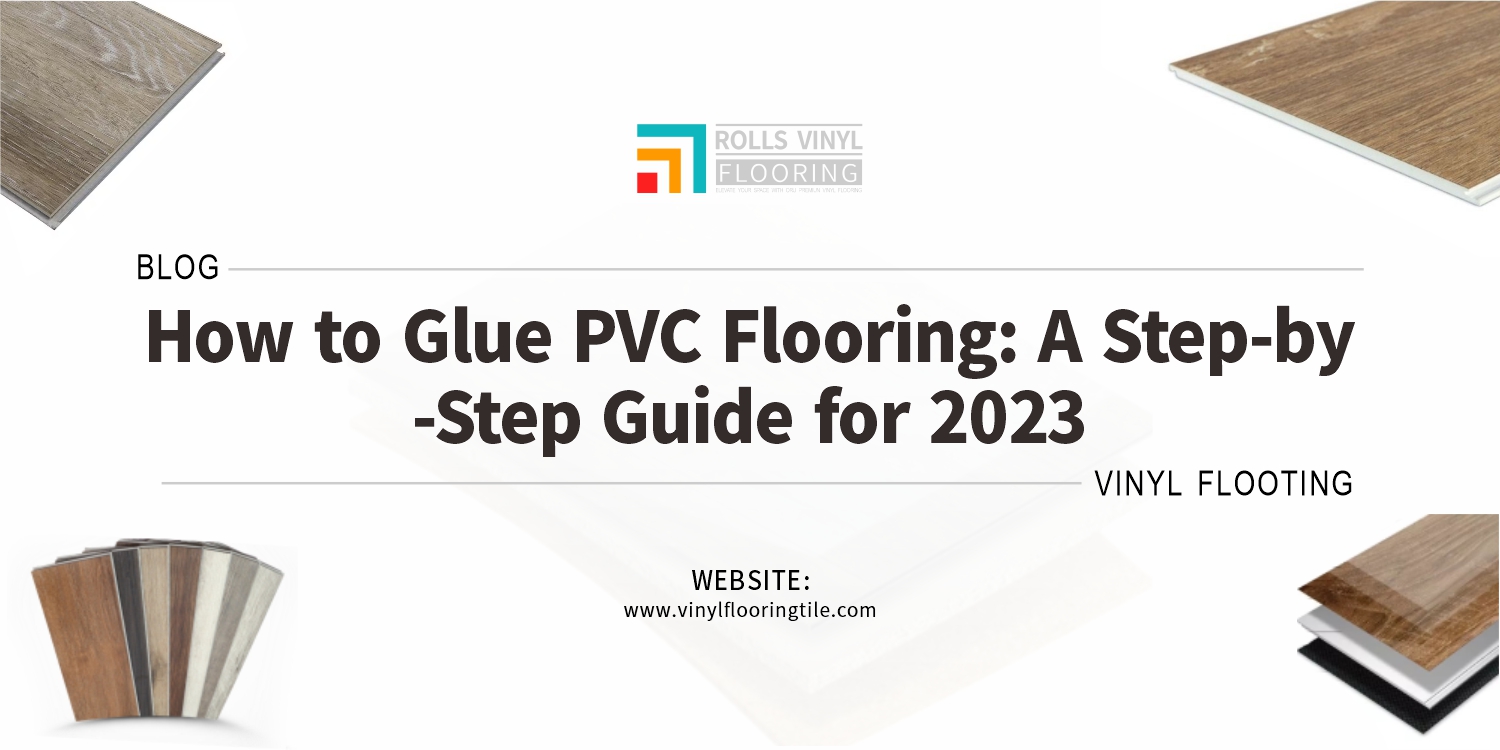Have you ever walked into a space and marveled at the sleek, modern flooring beneath your feet, wondering what it’s made of? The chances are high that you’ve encountered PVC flooring, a popular choice among homeowners and businesses. While its aesthetic appeal is undeniable, many must know this flooring type’s numerous benefits.
PVC flooring, known for its versatility and durability, has become a go-to solution for various spaces in 2023. Made from polyvinyl chloride, this flooring type combines the beauty of high-end materials with the resilience needed for high-traffic areas. Whether you’re renovating your home or considering options for a commercial space, PVC flooring presents a compelling case.

Stay with us as we delve deeper into the world of PVC flooring, exploring its benefits, installation process, and care tips. Your ultimate guide to making an informed decision starts here.
Understanding PVC Flooring
A. What is PVC Flooring?
Polyvinyl Chloride, commonly known as PVC flooring, is a type of resilient flooring known for its durability, ease of maintenance, and relatively low cost.
PVC flooring is made from synthetic plastic polymers, making it highly resistant to water and moisture, which is a crucial point to consider when choosing flooring options. Such resistance makes it an ideal choice for spaces exposed to dampness, like bathrooms and kitchens. Moreover, it offers a wide range of designs, mimicking the appearance of natural materials such as wood, stone, or ceramic, lending aesthetic appeal to any space.
B. Components and Production Process of PVC Flooring
This process involves using a mixture of Polyvinyl Chloride and plasticizers. Plasticizers are the critical component providing PVC flooring with flexibility and durability.
The production process starts with heating the mixture until it melts. This molten material is then passed through a calendaring machine to form sheets. These sheets undergo several functions, including cooling, cutting, and embossing. The embossing process allows the creation of various designs and textures, enabling you to select a flooring solution that suits your desired aesthetics.
C. Different Types of PVC Flooring

- Vinyl Sheet Flooring: This type comes in large, continuous, flexible sheets that provide a seamless, water-impervious surface. It’s commonly used in commercial buildings due to its cost-effectiveness and durability.
- Vinyl Tile Flooring: These are individual squares of various sizes that can mimic stone, ceramic, or wood. Due to its easy installation process, vinyl tile flooring is a popular choice for DIY homeowners.
- Vinyl Plank Flooring: These long planks can convincingly simulate the appearance of natural wood materials. It provides homeowners with a cost-effective alternative to natural hardwood flooring.
- Luxury Vinyl Flooring: This is the highest quality of vinyl flooring, offering more realistic textures and designs. It’s also thicker and more durable than other types of PVC flooring.
You can choose the best flooring option that meets your needs and budget.
Benefits of PVC Flooring
One type continues to stand out for its remarkable benefits: PVC (Polyvinyl Chloride) flooring. I can vouch for its numerous advantages, backed by comprehensive knowledge and hands-on experience.

A. Durability
One of the significant advantages of PVC flooring is its exceptional durability. I have seen PVC floors last for years without losing their color or pattern, making them an ideal choice for residential and commercial applications. The material is not only anti-static but also resistant to chemicals. The longevity alone makes PVC an excellent flooring investment, especially for high-traffic areas.
B. Water Resistance
As an industry professional, I can guarantee that PVC flooring is a go-to choice for those who need water-resistant flooring. PVC is a reliable choice, whether it’s for a bathroom, kitchen, or laundry room. It is inherently resistant to moisture penetration, reducing the chances of water damage.
C. Easy to Install and Maintain
Who wouldn’t appreciate a floor that’s low maintenance and easy to install? From my extensive involvement in installations, I’ve found PVC flooring to be one of the most user-friendly materials. It often comes in tiles or planks that can be easily fitted, and once installed, it requires minimal upkeep. Regular sweeping and mop cleaning can keep a PVC floor looking brand new for years.
D. Variety of Designs and Styles
PVC flooring also offers various designs and styles that cater to multiple tastes. From wood-like finishes to stone-like patterns, the design possibilities are nearly limitless. You can depend on PVC flooring to provide the desired look when creating a specific aesthetic.
E. Cost-Effective
PVC flooring is often more economical compared to other flooring options. Due to its durability and low-cost production, it offers a cost-effective solution for homeowners and businesses alike. The overall savings when choosing PVC flooring can be significant, considering its longevity and low maintenance requirements.
Considerations When Choosing PVC Flooring
There are several critical factors to consider when choosing this flooring option. Reflecting on this in-depth familiarity, the following considerations come to the forefront:

A. Quality and Thickness
The first consideration for PVC flooring is its quality and thickness, which can vary widely across manufacturers. Look for PVC flooring at least 3mm thick for residential applications. A thicker flooring will improve durability, which is essential, especially in high-traffic areas.
B. Room and Usage
Your room specifications and space usage greatly influence the type of PVC flooring you choose. For instance, high-moisture areas like bathrooms may require different types of PVC flooring compared to low-moisture areas such as bedrooms or living rooms. Frequent usage and heavy furniture can also cause wear and tear. Therefore, a higher wear layer is advisable for such areas.
C. Underfoot Comfort
Homeowners often overlook the importance of underfoot comfort when choosing PVC flooring. A comfortable floor isn’t just about softness; it also involves the floor’s temperature beneath your feet and ease of cleaning. Opt for PVC flooring that provides comfort and practicality to cater to your lifestyle needs.
D. Health and Environmental Impact
Consider your flooring choice’s environmental and health impacts. Be sure to choose phthalate-free PVC flooring to safeguard your family’s health. Also, look for manufacturers who follow eco-friendly practices and have a straightforward recycling program.
E. Warranty
When purchasing PVC flooring, a product’s warranty should not be taken lightly. A solid proof is a testament to a manufacturer’s confidence in their product’s longevity. Therefore, always opt for a flooring option with a comprehensive warranty covering manufacturing defects and wear and tear.
Popular Trends in PVC Flooring for 2023

A. Design Trends
Regarding PVC flooring design trends, 2023 promises a wealth of innovative and stylish options. Over the years, and courtesy of my hands-on experience in the industry, I’ve observed increasing demand for more realistic visual effects. This trend has led to the creation PVC flooring that emulates natural materials such as stone, wood, and ceramic to offer versatile and aesthetically pleasing designs.
In 2023, minimalist and Scandinavian designs are expected to take center stage. These styles, characterized by their simplicity, functionality, and incorporation of natural elements, bring a fresh, airy vibe to any room. Also, bold, abstract patterns and unique color combinations are making a striking comeback, empowering homeowners to personalize their rooms more vibrantly than ever.
B. Technological Innovations
Technology continues to revolutionize PVC flooring, enhancing both its functionality and aesthetics. Digital printing technology, for instance, is continuously improving, allowing for even more precise emulation of other materials.
Advancements in locking systems for PVC flooring have made it easier to install and replace individual planks. This has significantly reduced installation time and costs, contributing to the growing popularity of PVC flooring. We can also expect improvements in surface treatments, providing even more excellent resistance to scratches, stains, and dents.
C. Sustainability Trends
Sustainability is a rising concern across all industries, and PVC flooring is no exception. The trend towards more sustainable PVC flooring continues in 2023, with manufacturers focusing on reducing their carbon footprint.
This involves using more recycled materials in production and developing PVC flooring that is fully recyclable at the end of its life cycle. Furthermore, more companies are implementing responsible manufacturing processes to reduce environmental pollution. It’s a trend that sets an important precedent for the industry’s future.
D. Market Trends
The PVC flooring market has grown tremendously over the past few years, and 2023 is set to maintain this growth trajectory. Driven by consumer demand for low-maintenance, cost-effective, and stylish flooring solutions, there is a constant push to produce innovative PVC flooring designs.
The rise in worldwide residential and commercial construction projects contributes to the market’s expansion. The convenience and flexibility of PVC flooring make it a top choice for contractors, designers, and homeowners.
The year 2023 holds exciting prospects for the PVC flooring industry. The future looks bright, from design trends and technological advancements to sustainable practices and market dynamics.
How to Install PVC Flooring: Step-by-step Guide

A. Tools Required
Before we begin, let me walk you through the tools necessary for the installation process. Having the right tools can make or break a project. You will need a utility knife, a straight edge or carpenter’s square, and a tape measure. A fine-tooth saw would also be handy for trim work. And, of course, don’t forget your protective equipment – safety glasses and gloves.
B. Preparation
Preparation is of utmost importance in ensuring a smooth installation process. Begin by inspecting the subfloor for any defects. It requires to be clean, dry, flat, and structurally sound. Any imperfections or irregularities can affect the outcome of your floor. Remove any existing flooring and vacuum the area thoroughly. I recommend applying a suitable primer to the subfloor for an optimal result. This will provide a better bond between the adhesive and the substrate.
C. Installation Process
You can proceed with the installation once the surface has been adequately prepared. First, lay out the PVC flooring loosely on the floor. This ensures that you have the correct measurements and patterns in place.
Next, apply the adhesive using a notched trowel. Be sure to use the appropriate glue recommended by the flooring manufacturer. Then, lay down the flooring, firmly pressing it into the adhesive. Carefully align the pieces, ensuring a tight fit with no gaps. Use a roller across the surface to ensure the flooring is even and all air pockets have been removed.
It is also crucial to remember the drying and curing times of the adhesive used. Rushing this process can lead to shifts in the flooring and compromise the quality of the finished project.
D. Finishing Touches
To complete the installation, trim any excess flooring material using a utility knife. If necessary, install baseboard molding to cover the expansion gap. Always follow the manufacturer’s recommendations for cleaning and maintenance to extend the life of your new PVC floor.
Care and Maintenance Tips for PVC Flooring
Regular and thorough care is crucial to maintain the aesthetic appeal and extend the life of your PVC flooring. The tips you will find below come from professional practice and are highly effective.

A. Daily Cleaning
For everyday care, a simple sweep or vacuuming is sufficient. Removing loose dirt and dust that can scratch the surface over time is essential. It’s also advisable to clean up spills promptly to avoid possible staining. Using a microfiber mop dampened with warm water can also be an effective way of cleaning the surface. Regular cleaning ensures a hygienic living environment and maintains the floor’s original shine and color.
B. Deep Cleaning
Every week or as required, deep cleaning should be performed. Use a gentle pH-neutral cleaning solution diluted in warm water. Using a damp mop, apply the solution evenly over the floor. Avoid excess water, which can seep into the seams and undermine the adhesive. Remember to rinse the mop frequently in the cleaning solution to avoid spreading the dirt around the floor.
C. Preventing Scratches and Damages
Place protective pads under furniture legs to protect your PVC flooring from scratches or damage. Be mindful while moving heavy furniture; lifting rather than dragging it across the floor is recommended. Also, using doormats at entrances can help minimize the amount of grit and dirt brought onto the bottom, which can cause abrasion over time.
D. Repairing Damages
In the event of damage, it’s essential to repair them promptly to prevent them from worsening. Minor scratches can be treated with a specialized PVC floor repair kit. The affected plank may need to be replaced entirely for more serious damages like gouges or tears. It’s always advisable to consult a flooring professional to ensure the repair is done correctly.
Conclusion
In wrapping up, PVC flooring is a premier choice for residential and commercial spaces, offering a blend of aesthetic appeal and unmatched durability. From understanding its core components to recognizing its numerous advantages, it’s clear why this flooring type has gained such traction in 2023. As you contemplate your next flooring decision, we hope this article, “The Ultimate Guide to

